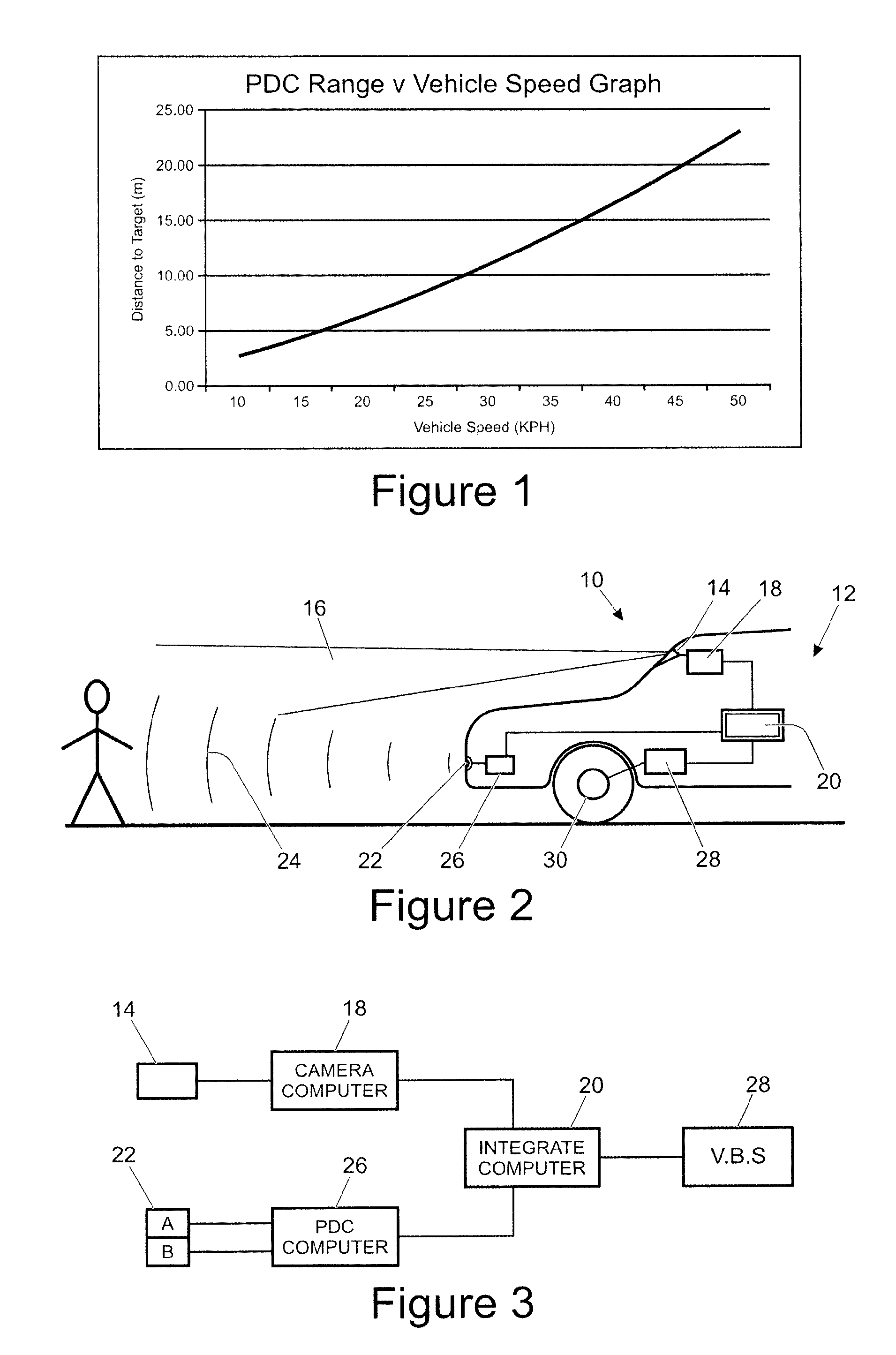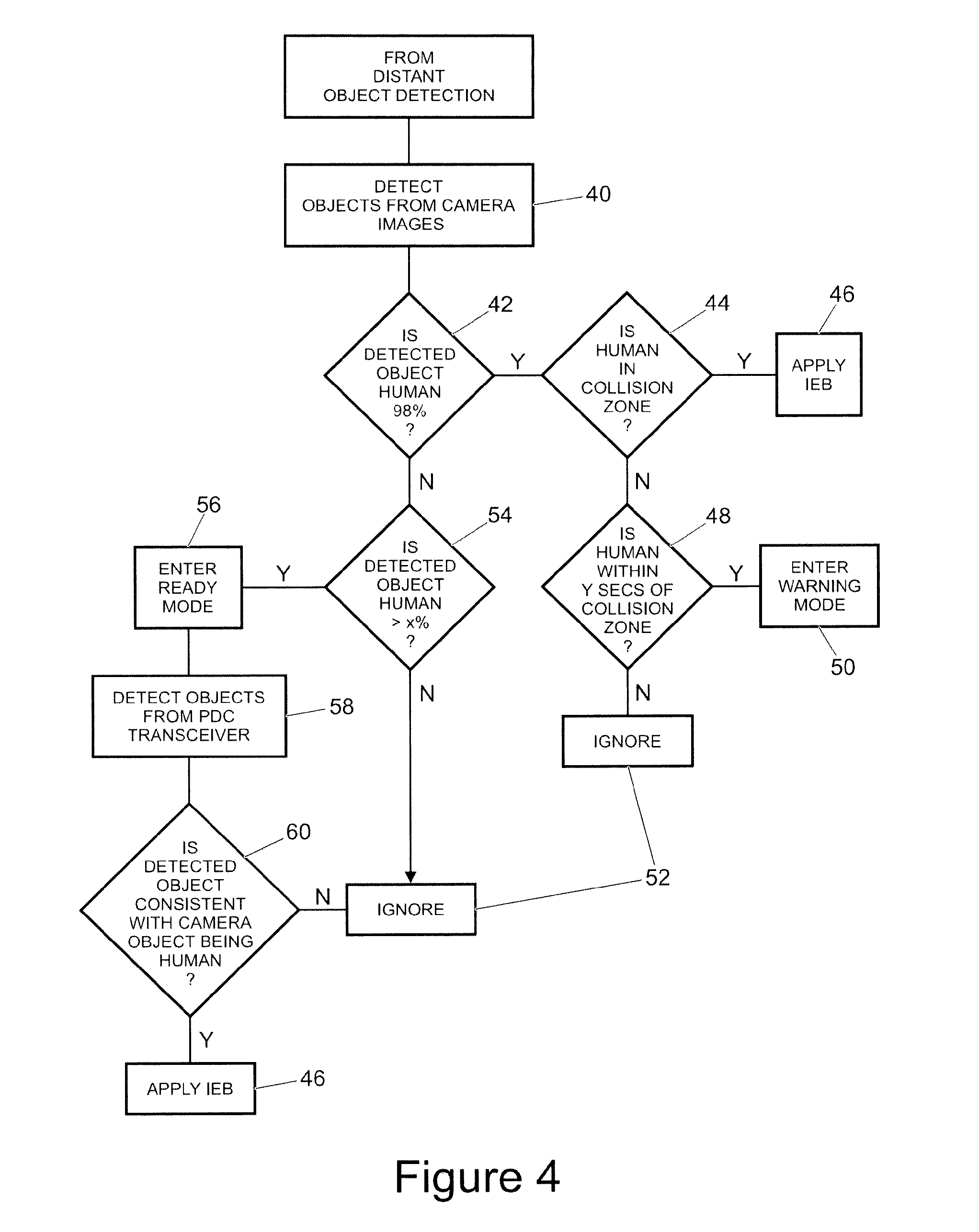Emergency Braking System for a Vehicle
- Summary
- Abstract
- Description
- Claims
- Application Information
AI Technical Summary
Benefits of technology
Problems solved by technology
Method used
Image
Examples
Embodiment Construction
[0084]In FIG. 1, a graph is plotted of the distance from a target that a PDC system is capable of detecting against vehicle speed. The graph uses equation (1) below to calculate the range (R) required to effect braking, taking into account the estimated transport delays in the system:
R=v*TPDC+v*TBD+SO+v2 / 2a (1)
[0085]Where v is the vehicle speed, TPDC is the time it takes a system, the PDC, to make a decision (typically 0.3 seconds (s)), TBD is the time for the brakes to start operating and decelerating the vehicle (typically 0.3 s), SO is the distance from the object at which the vehicle should at a minimum come to a complete halt, a is the maximum deceleration (which depends on many environmental factors not possible to control, but typically may be set at 8.2 ms−2).
[0086]Equation (1) is based upon the following kinematic equation of linear motion:—
r=v22a(2)
[0087]From the graph it can be seen that with a range of 15 m, a PDC can operate at speeds up to 35-40 kph. However, if the d...
PUM
 Login to View More
Login to View More Abstract
Description
Claims
Application Information
 Login to View More
Login to View More - R&D
- Intellectual Property
- Life Sciences
- Materials
- Tech Scout
- Unparalleled Data Quality
- Higher Quality Content
- 60% Fewer Hallucinations
Browse by: Latest US Patents, China's latest patents, Technical Efficacy Thesaurus, Application Domain, Technology Topic, Popular Technical Reports.
© 2025 PatSnap. All rights reserved.Legal|Privacy policy|Modern Slavery Act Transparency Statement|Sitemap|About US| Contact US: help@patsnap.com



